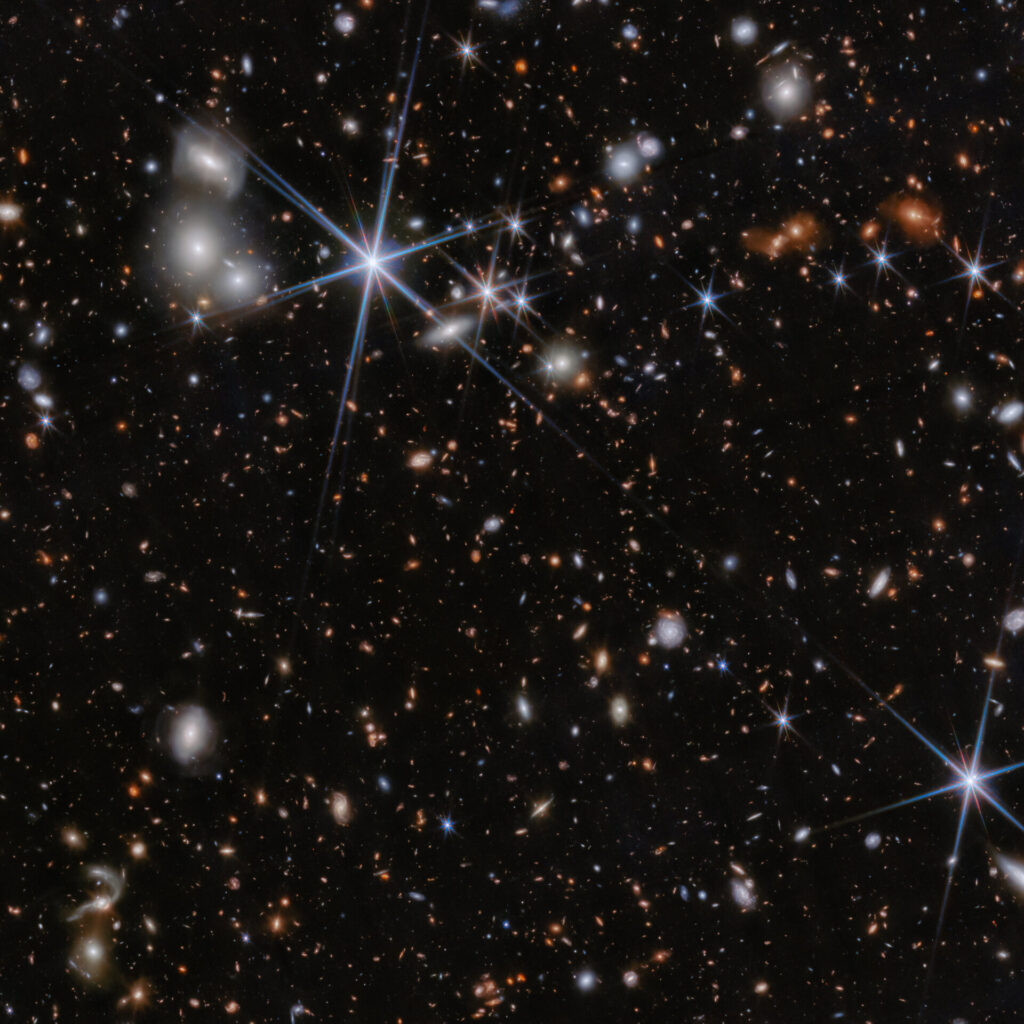The James Webb Space Telescope (JWST) has discovered the most distant pair of merging black holes known to date. It existed when the universe was only 740 million years old.

At the center of most galaxies (including ours) in the universe are supermassive black holes: gravitational monsters that have masses millions, and sometimes billions of times greater than the sun’s. They have had a huge impact on the evolution of the galaxies in which they are located.
The results of observations suggested that supermassive black holes existed already in the first billions of years after the Big Bang. This raises a logical question for astronomers: how did they grow and become so massive in such a short period of time?
The data obtained by JWST sheds light on this mystery. The telescope observed a system known by the designation ZS7. It is a pair of galaxies which merged just 740 million years after the Big Bang.

After analyzing the data collected by JWST, astronomers found that each of the galaxies contained a supermassive black hole. This is indicated by fast-moving streams of dense and hot gas ionized by radiation, which is usually emitted during the accretion of matter. The mass of one of the holes was 50 million times the mass of the Sun. For comparison, the mass of the black hole at the center of our Milky Way is “only” 4 million solar. The mass of the other black hole was most likely similar, but it is much more difficult to measure because it is covered by dense gas clouds.
According to scientists, JWST observations indicate that black hole mergers during galaxy collisions were one of the most important factors that ensured their rapid growth. They hope that the next generation of gravitational wave observatories will be able to detect gravitational waves from such events. This would provide a more complete picture of the events that took place in the early universe.
Earlier, we talked about how James Webb looked inside a globular cluster.
According to https://www.esa.int
Follow us on Twitter to get the most interesting space news in time
https://twitter.com/ust_magazine


